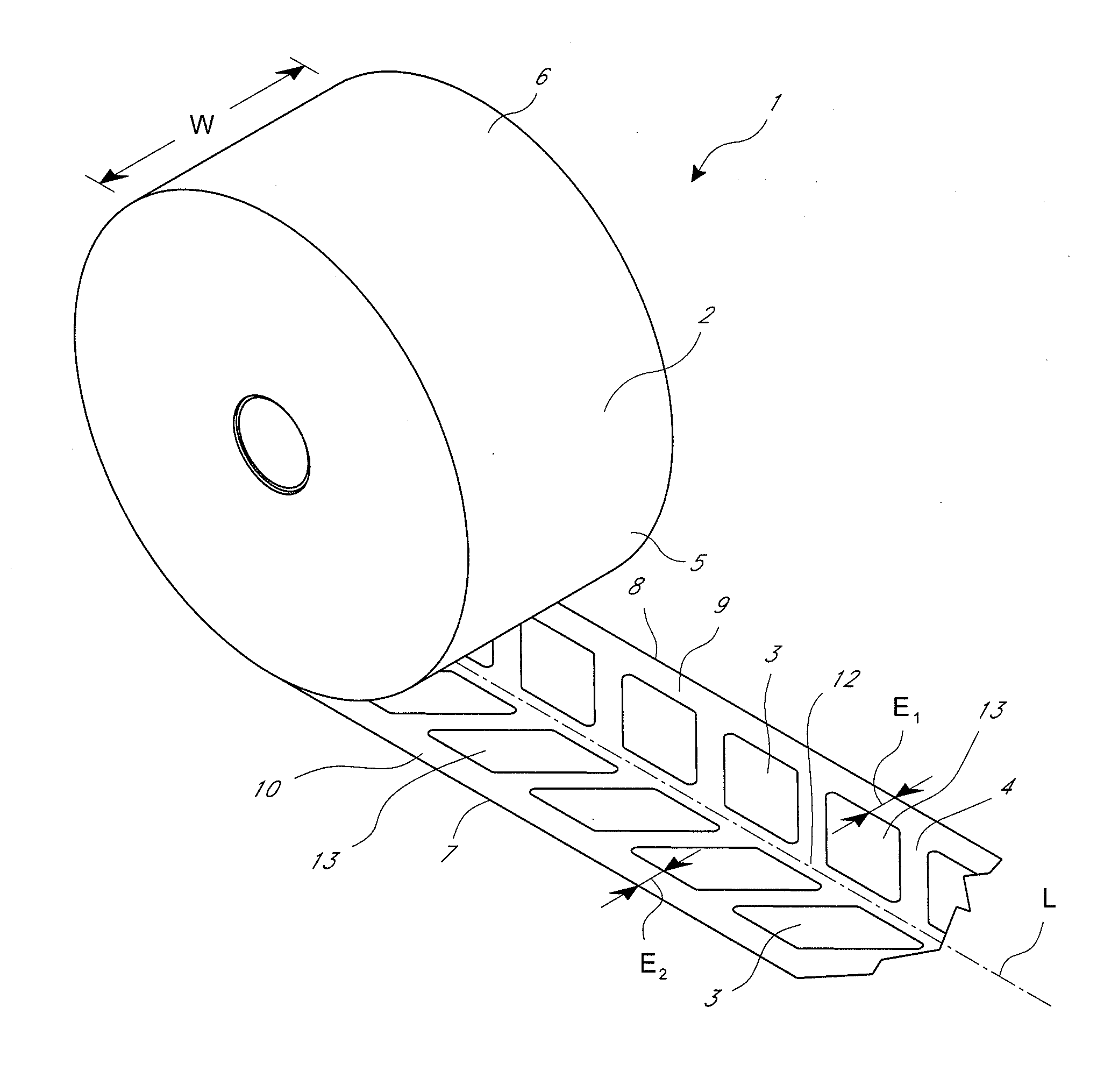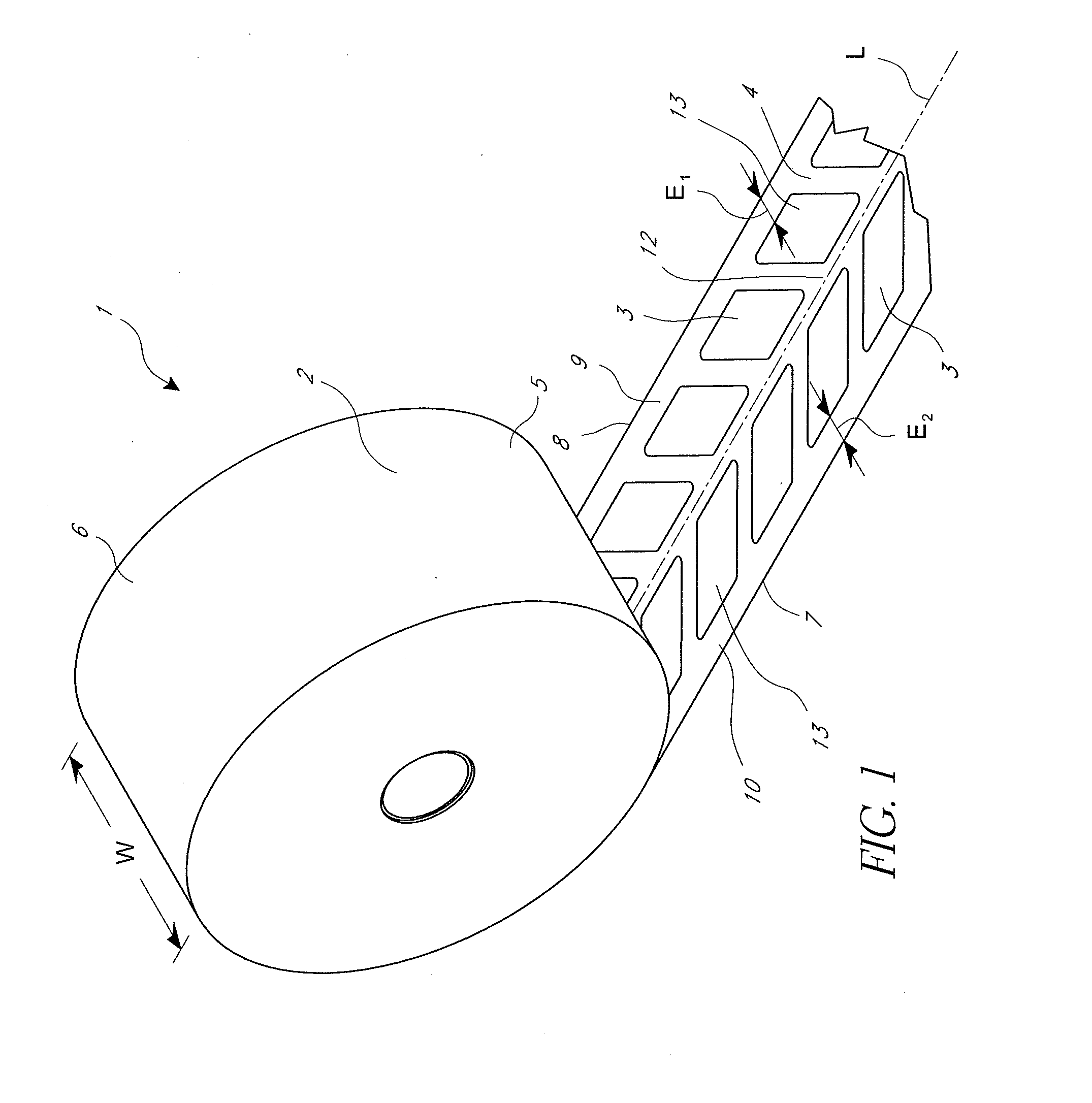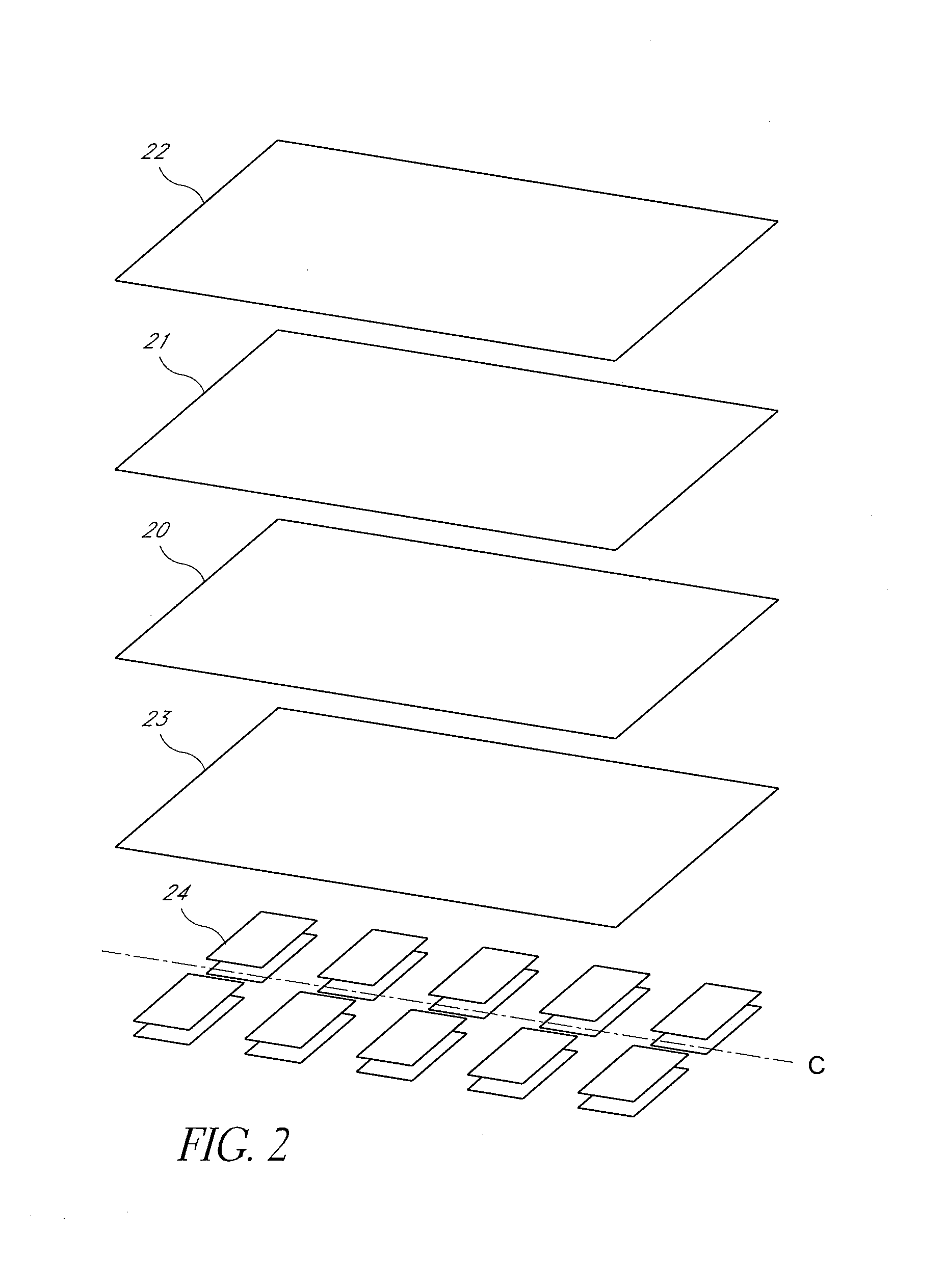Paper, labels made therefrom and methods of making paper and labels
a technology applied in the field of paper and labels, can solve the problems of excessive wear, printer wear and/or environmental protection, and relatively common jamming and/or fouling,
- Summary
- Abstract
- Description
- Claims
- Application Information
AI Technical Summary
Benefits of technology
Problems solved by technology
Method used
Image
Examples
Embodiment Construction
[0117]FIG. 1 illustrates a roll (1) of paper according to this disclosure. Roll (1) comprises paper (2), which is preferably thermal paper suitable for use in POS printers. Roll (1) is typically cut from a wider roll produced from a coating line or printing press and has a width (W) a longitudinal axis (L).
[0118]A pattern of adhesive (3) is applied to the inner surface (4) of the roll and a release coating (5) is applied to the outer surface (6) of the roll, so that the adhesive layer will not stick to the roll itself.
[0119]Preferably the edges (7) and (8) of the inner surface of the roll have an adhesive free zones (9, 10) along each of the outer edges of the inner surface and having transverse widths (E1, E2).
[0120]Optionally, the center line (11) in the center of the web and extending along with longitudinal (L) axis is also an adhesive free zone (12) having a transverse width (C).
[0121]Adhesive patches (13) are preferably separated from one another. Thus the adhesive can form is...
PUM
| Property | Measurement | Unit |
|---|---|---|
| angle | aaaaa | aaaaa |
| circumference | aaaaa | aaaaa |
| interior angles | aaaaa | aaaaa |
Abstract
Description
Claims
Application Information
 Login to View More
Login to View More - R&D
- Intellectual Property
- Life Sciences
- Materials
- Tech Scout
- Unparalleled Data Quality
- Higher Quality Content
- 60% Fewer Hallucinations
Browse by: Latest US Patents, China's latest patents, Technical Efficacy Thesaurus, Application Domain, Technology Topic, Popular Technical Reports.
© 2025 PatSnap. All rights reserved.Legal|Privacy policy|Modern Slavery Act Transparency Statement|Sitemap|About US| Contact US: help@patsnap.com



